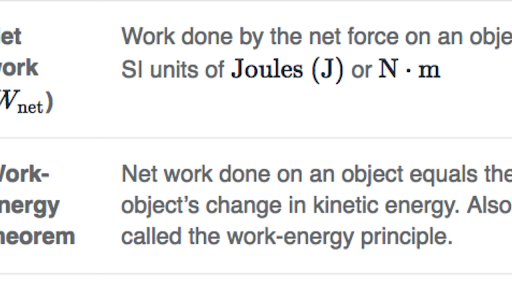For example you are working right now on your grasp of physics by reading this article.
Work energy theorem illustration.
Find the speed of the package in figure 3 at the end of the push using work and energy concepts.
And this is crudely speaking what we call the work energy theorem.
One tool which can be utilized to express an understanding of the work energy theorem is a bar chart.
So when velocities are given work done can be calculated directly by using the work energy theorem.
We know that all the car s kinetic energy is lost to friction.
The length of the bar is representative of the amount of energy present with a longer bar representing a greater amount of energy.
Significance we could have used newton s second law and kinematics in this example but the work energy theorem also supplies an answer to less simple situations.
Calculate the work that has been done on the brick between the moment it is released and the moment when it hits the ground.
But physics itself might not agree on this.
A work energy bar chart represents the amount of energy possessed by an object by means of a vertical bar.
If you don t do work at all then the kinetic energy will not change.
Work is said to be done when an acting force displaces a particle.
If there is no displacement there is no work done.
Since the kinetic energy is removed we are basically saying the negative the negative sign is saying that the kinetic energy is removed.
Determining speed from work and energy.
So negative work removes kinetic energy from the body.
The work energy theorem is another example of the conservation of energy which you saw in grade 10.
We apply the work energy theorem.
Therefore we first need to determine the car s kinetic energy at the moment of braking using.
The work energy theorem explains the reasons behind this physics of no work.
Anyways this much kinetic energy is removed so by definition this is the work done on the tempo.
Therefore the change in the car s kinetic energy is equal to the work done by the frictional force of the car s brakes.
It basically says when you do work you either add or you remove the kinetic energy from the body.
This definition can be extended to rigid bodies by defining the work of the torque and rotational kinetic energy.
Here the work energy theorem can be used because we have just calculated the net work w net and the initial kinetic energy.
The work energy theorem is useful however for solving problems in which the net work is done on a particle by external forces is easily computed and in which we are interested in finding the particles speed at certain positions of even more significance is the work energy theorem as a starting point for a broad generalization of the concept.

